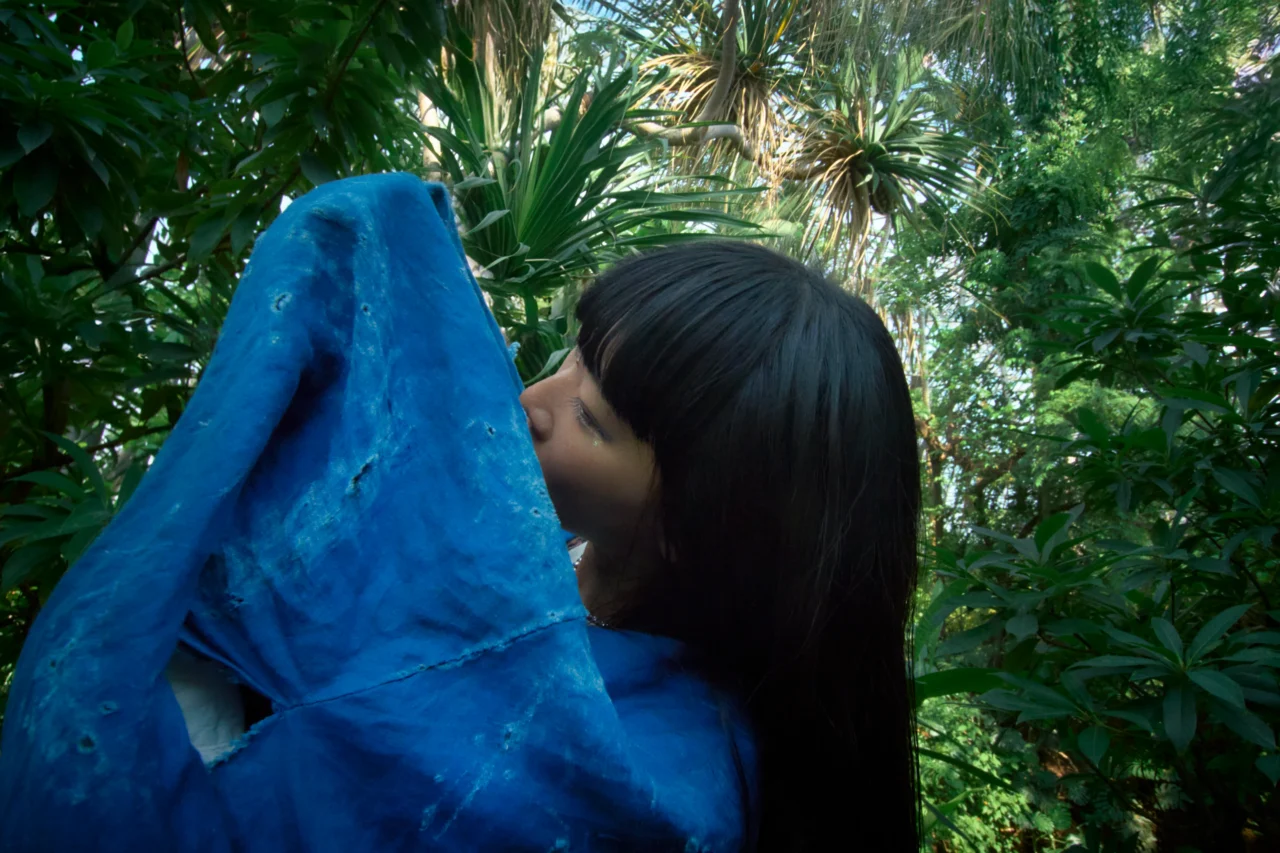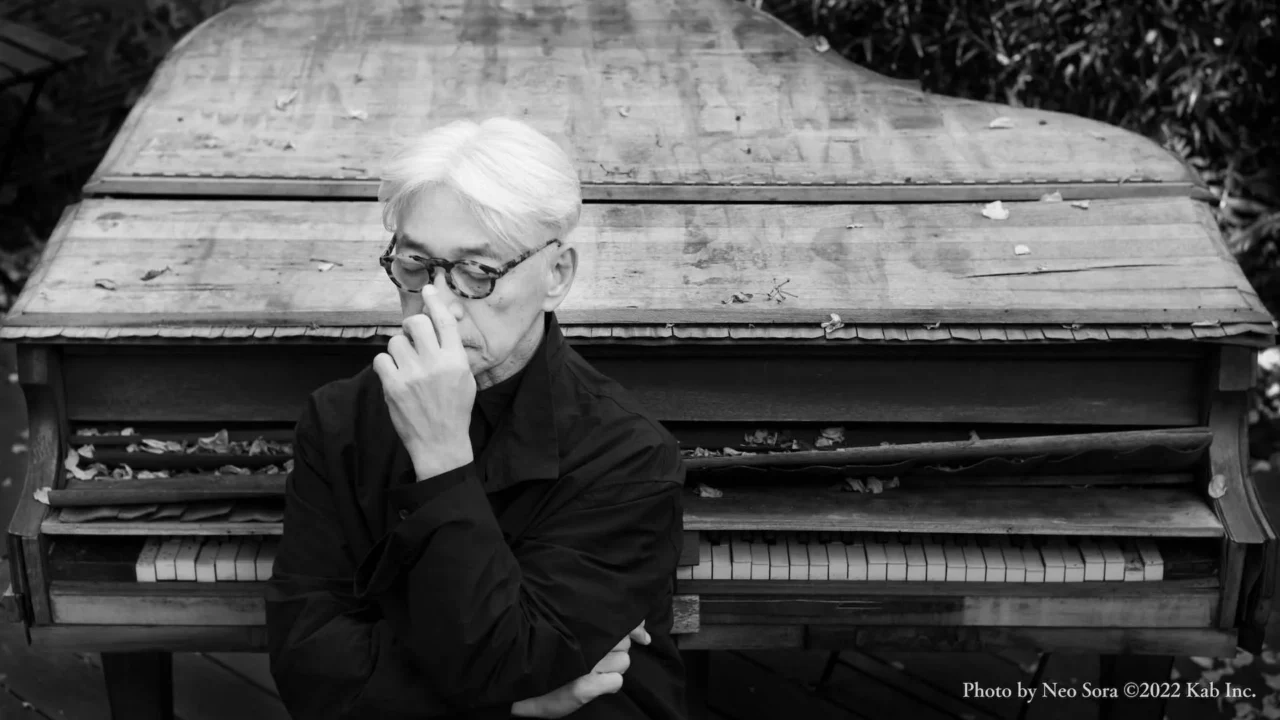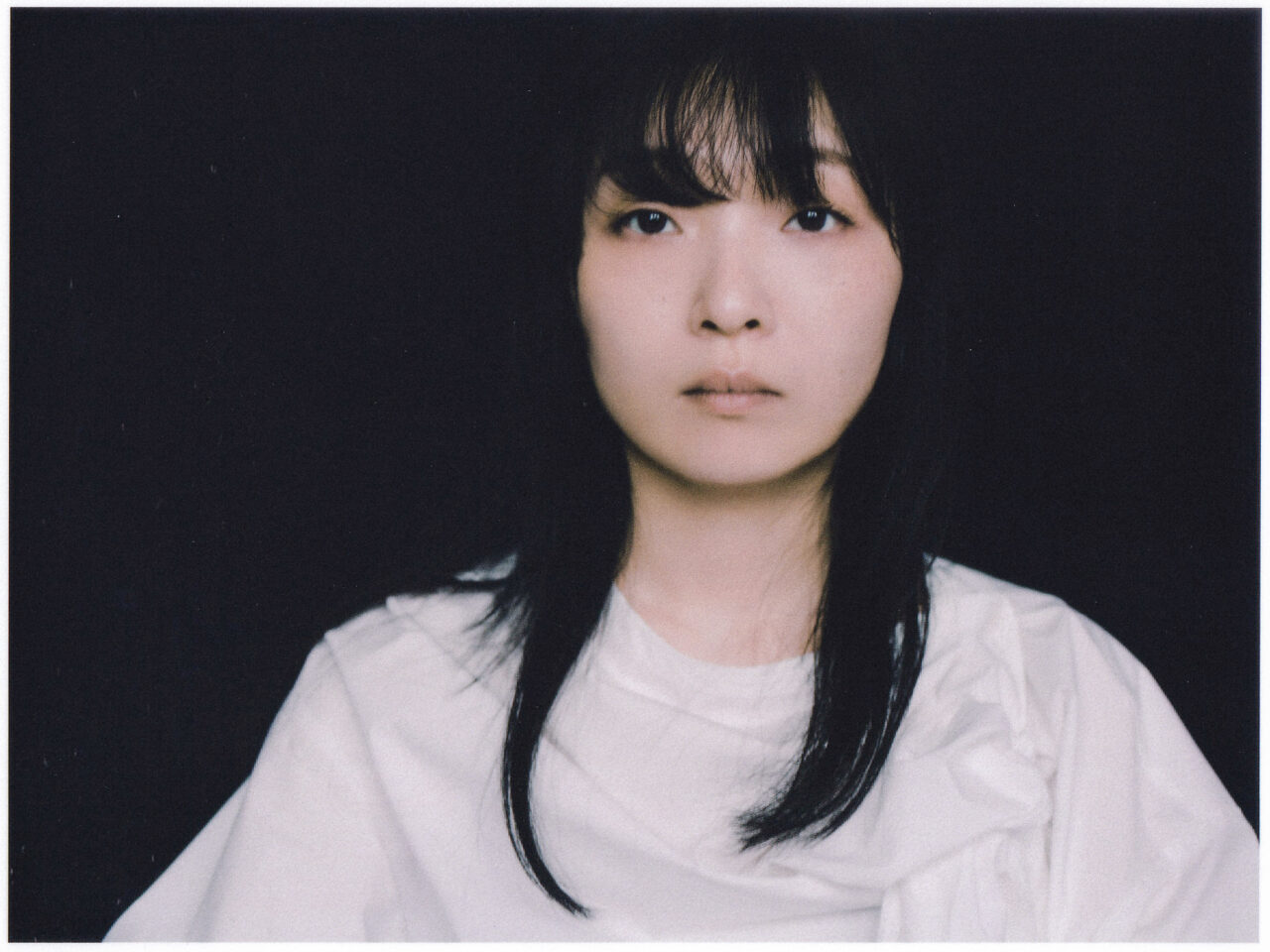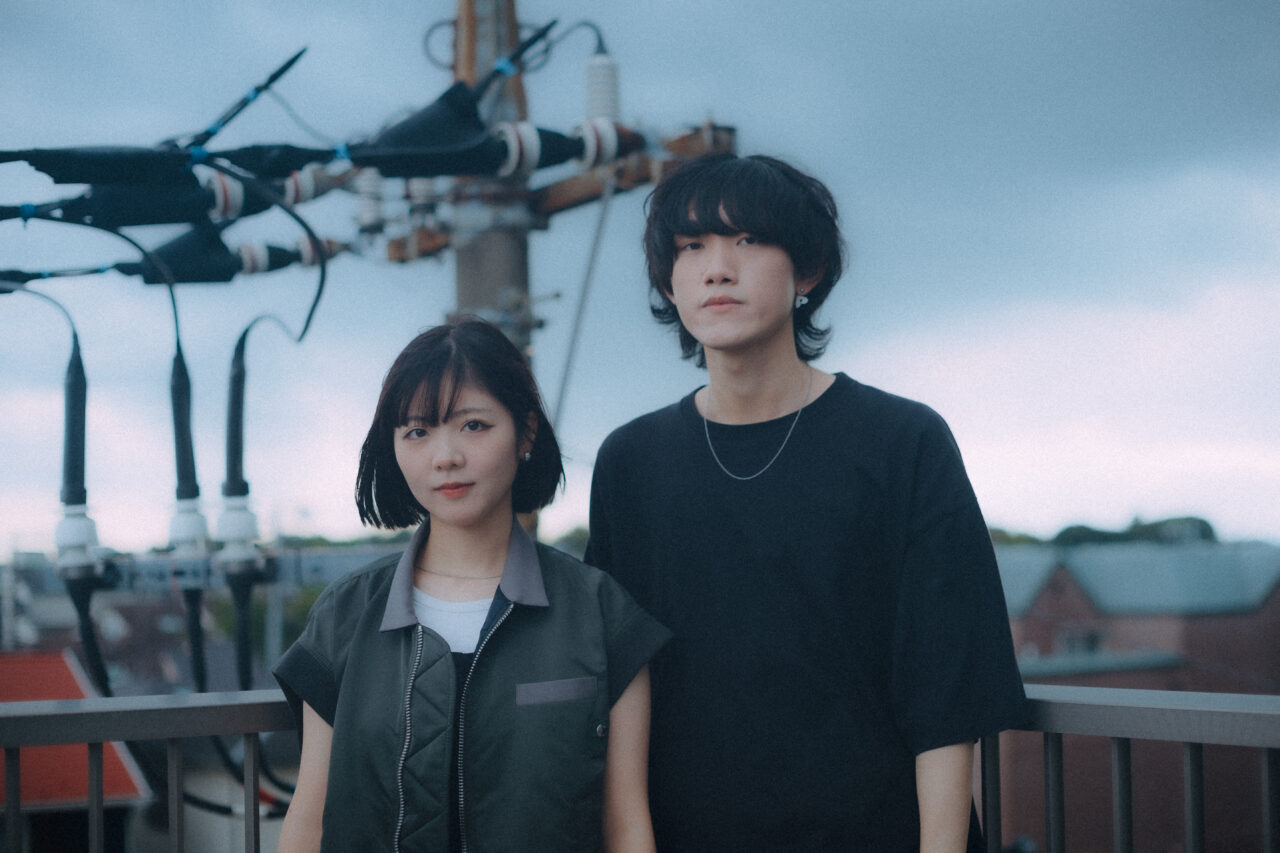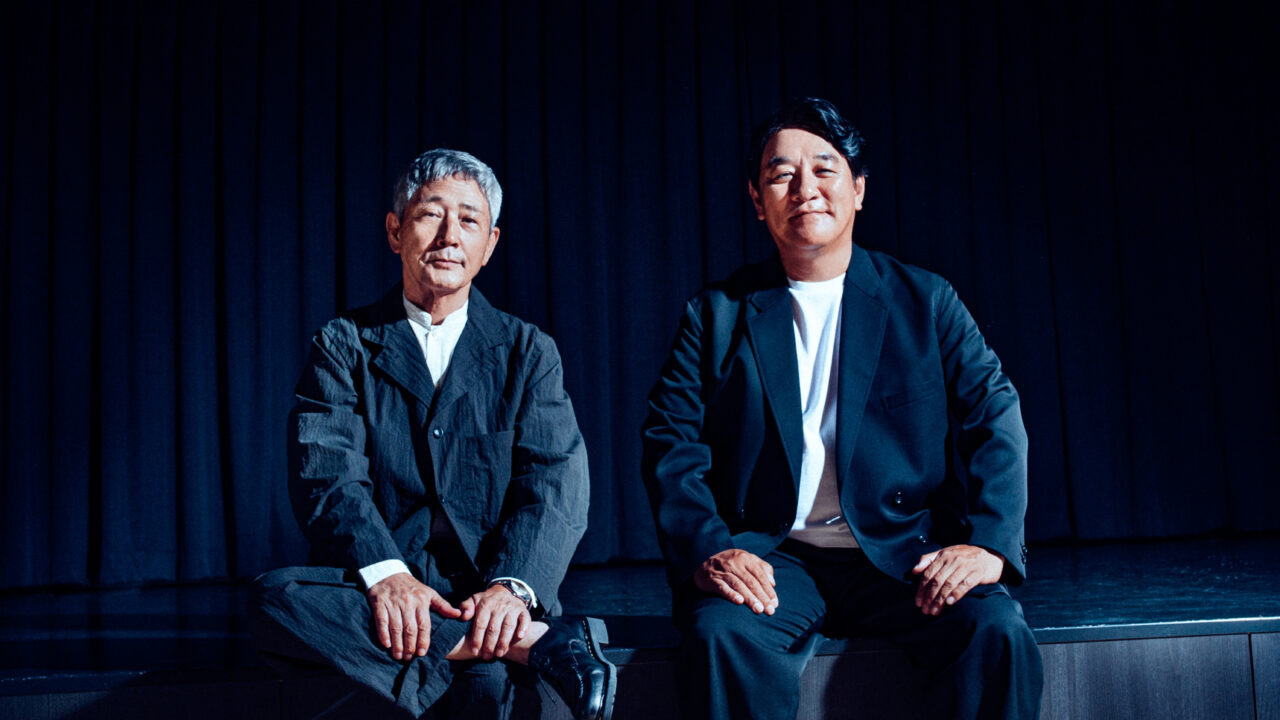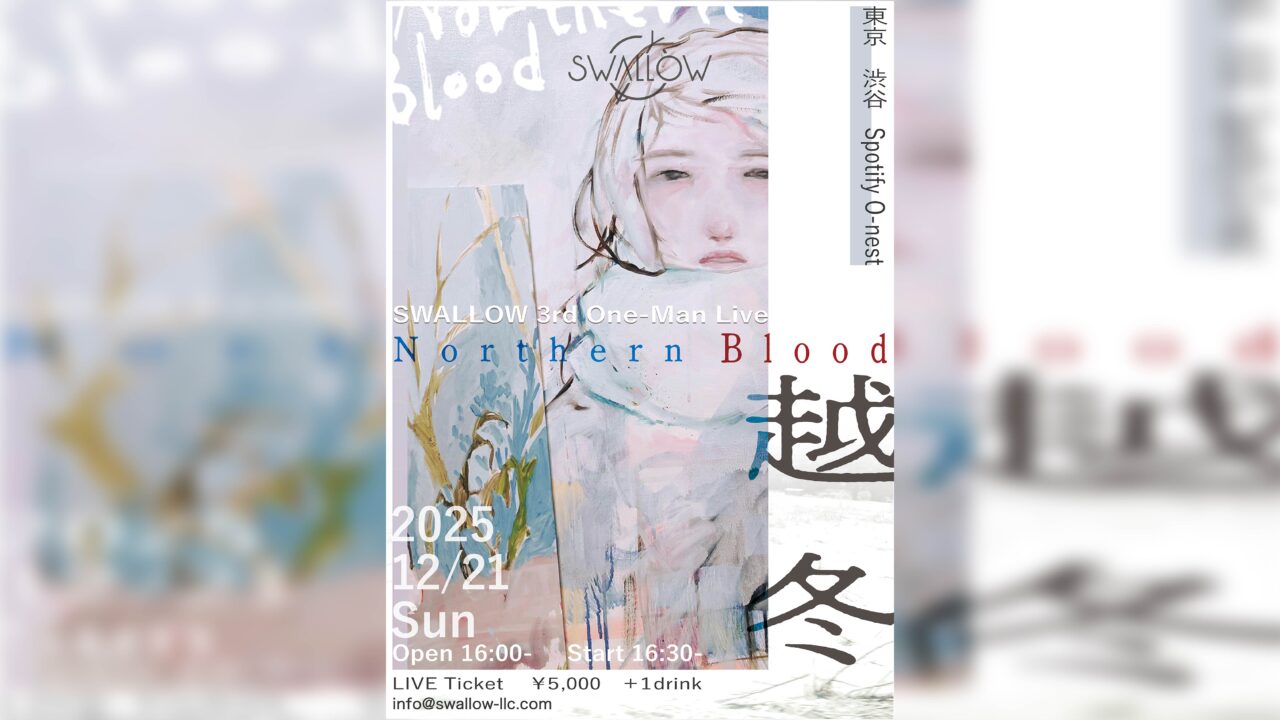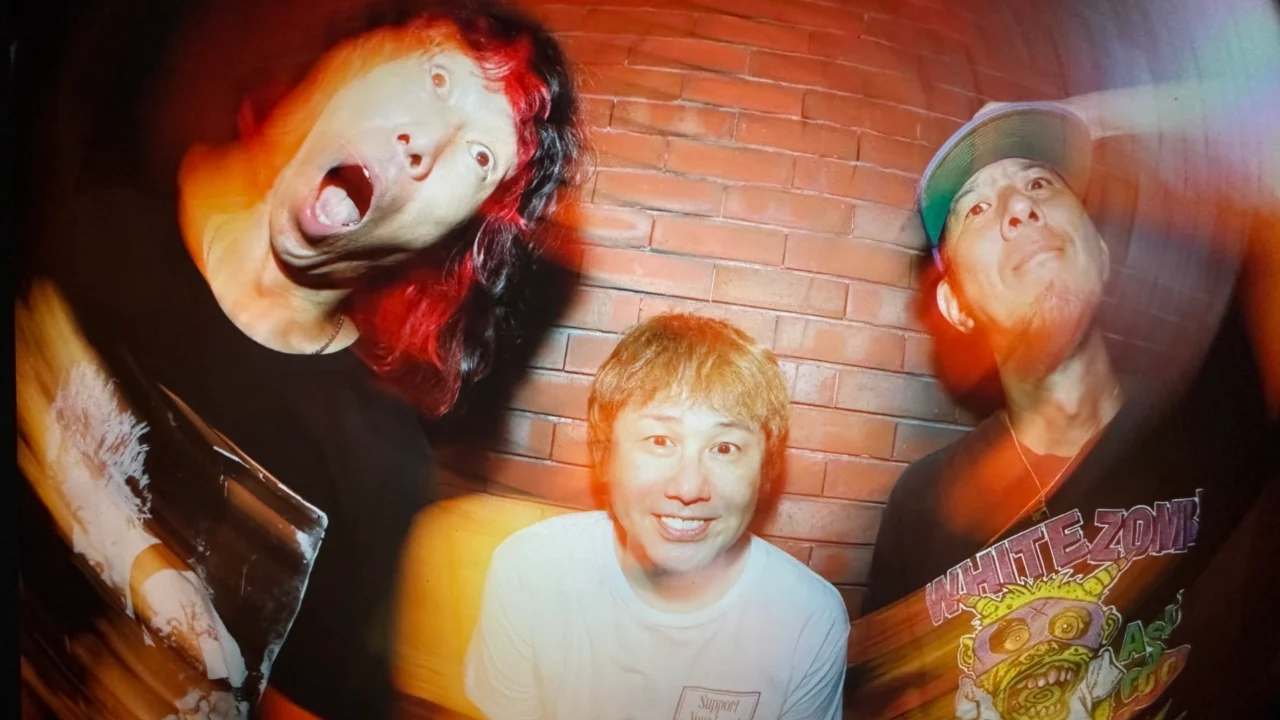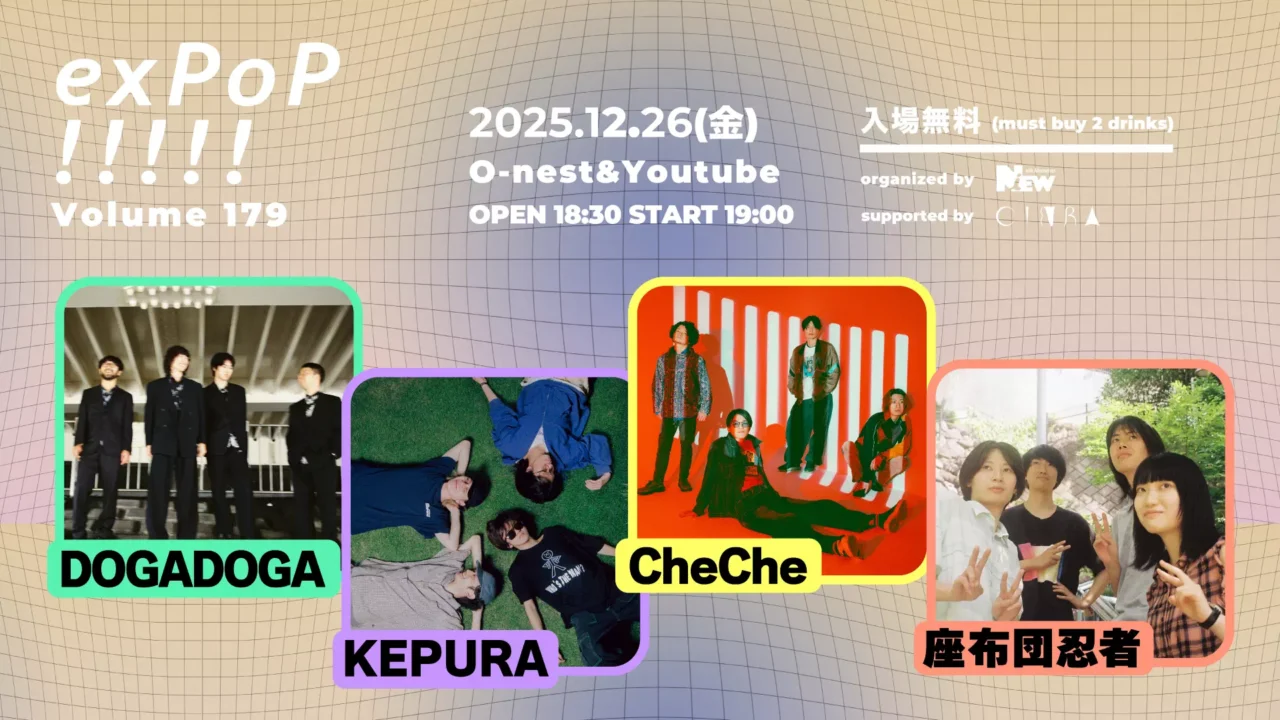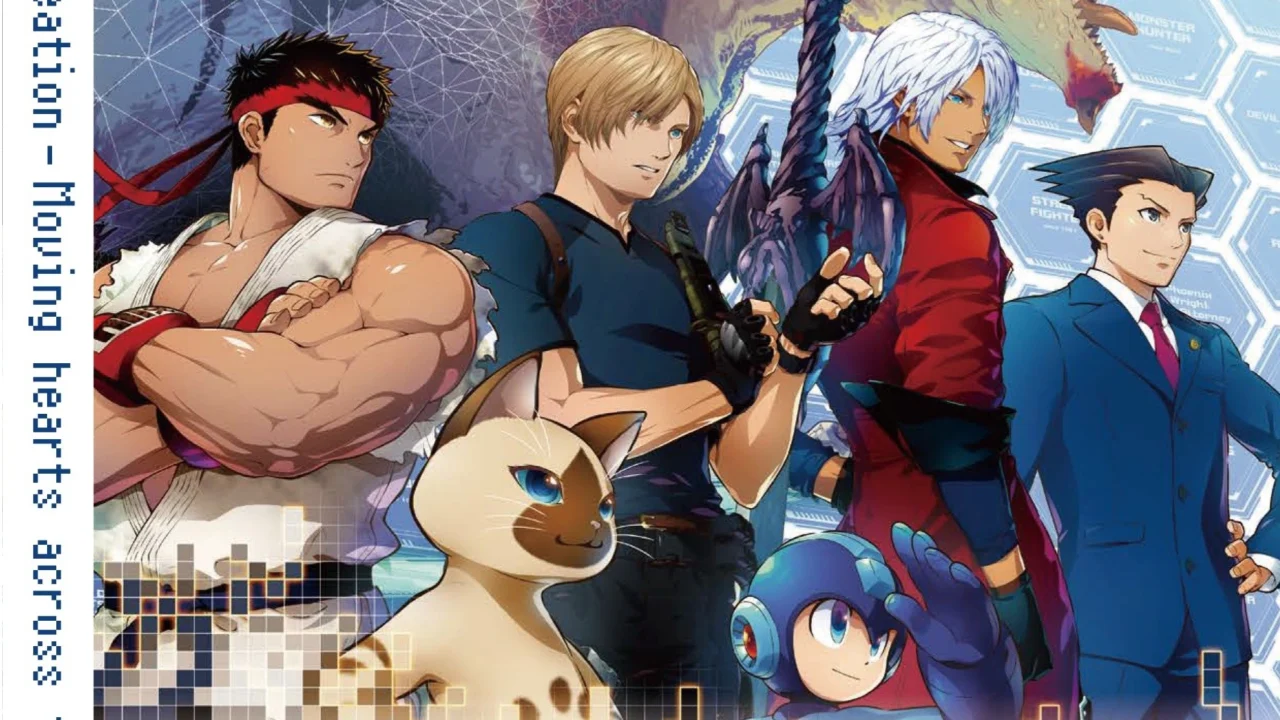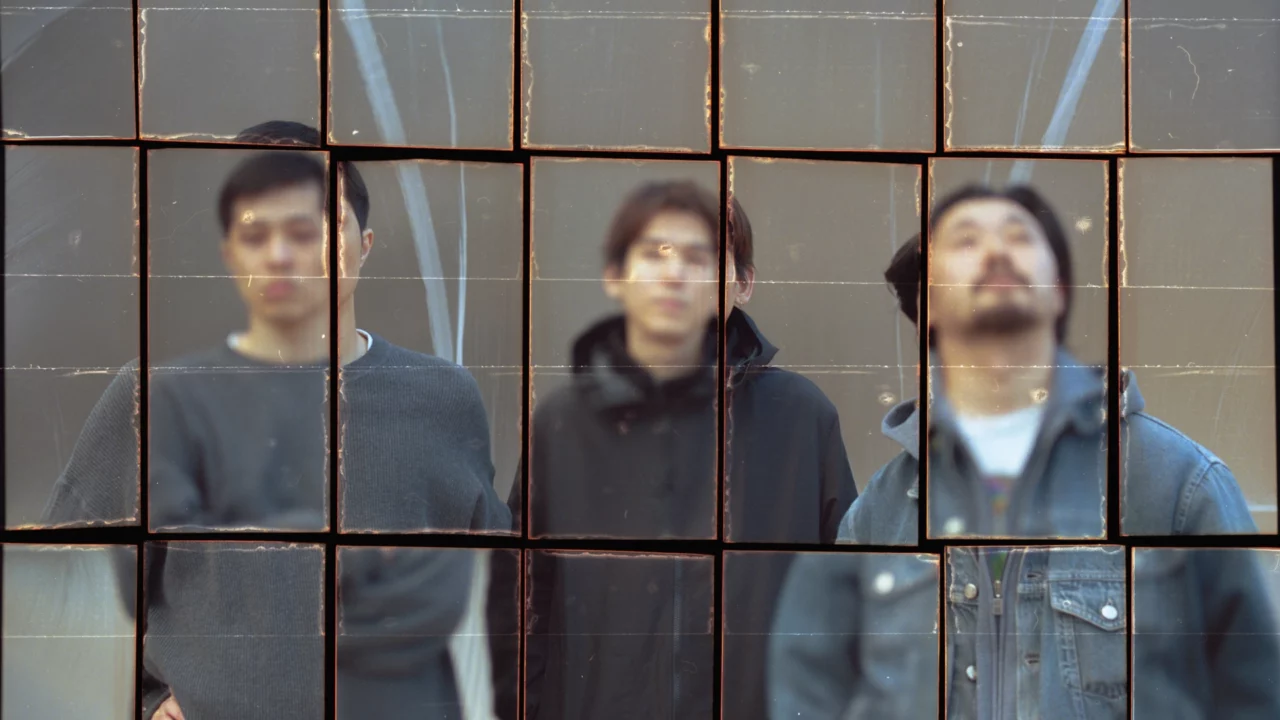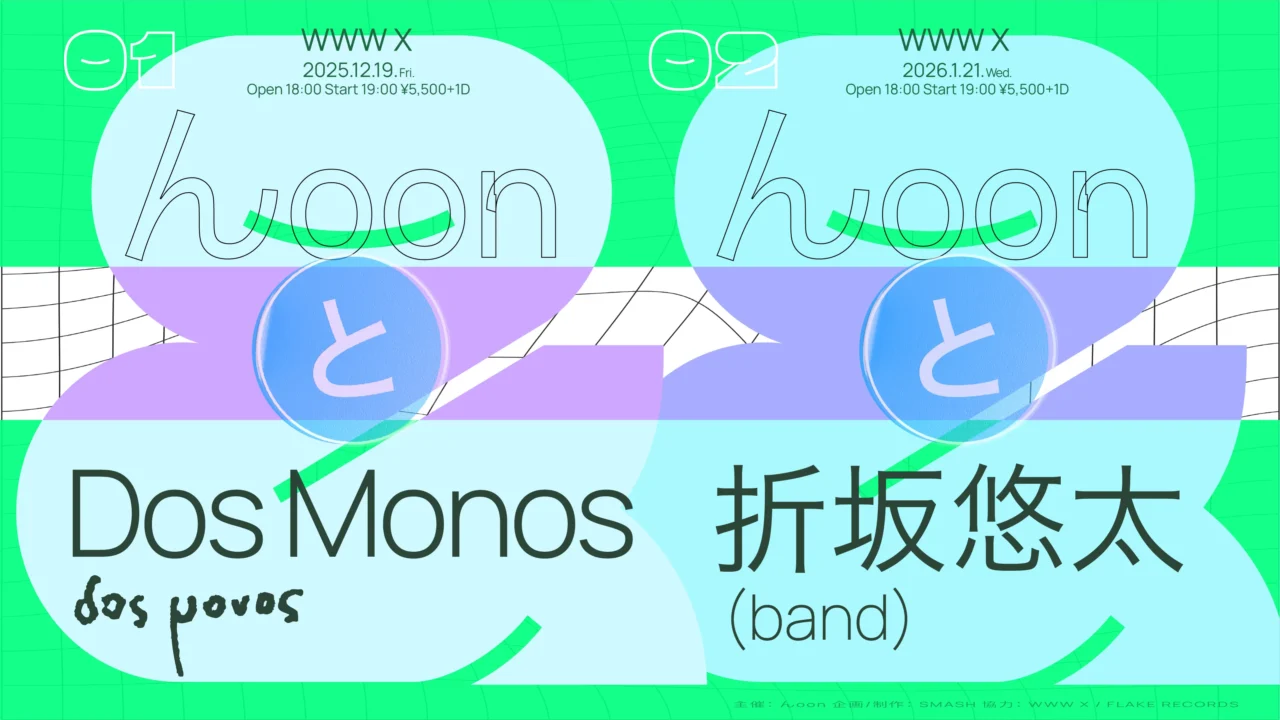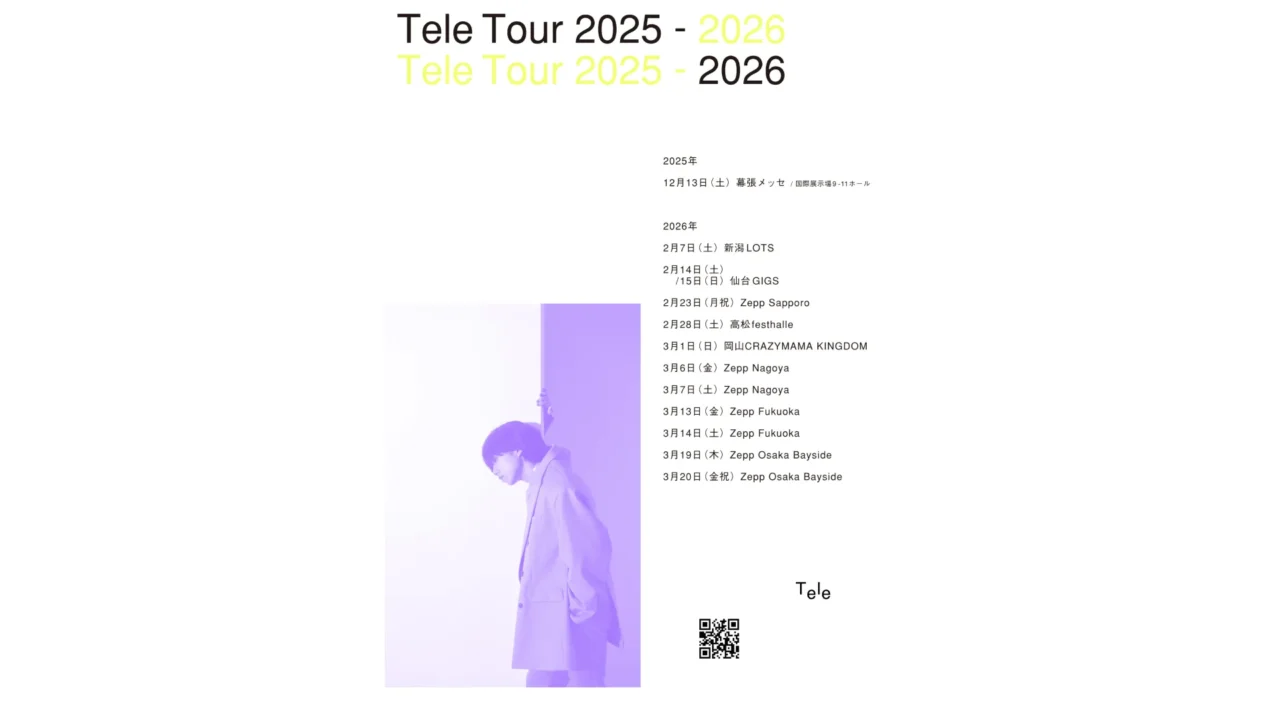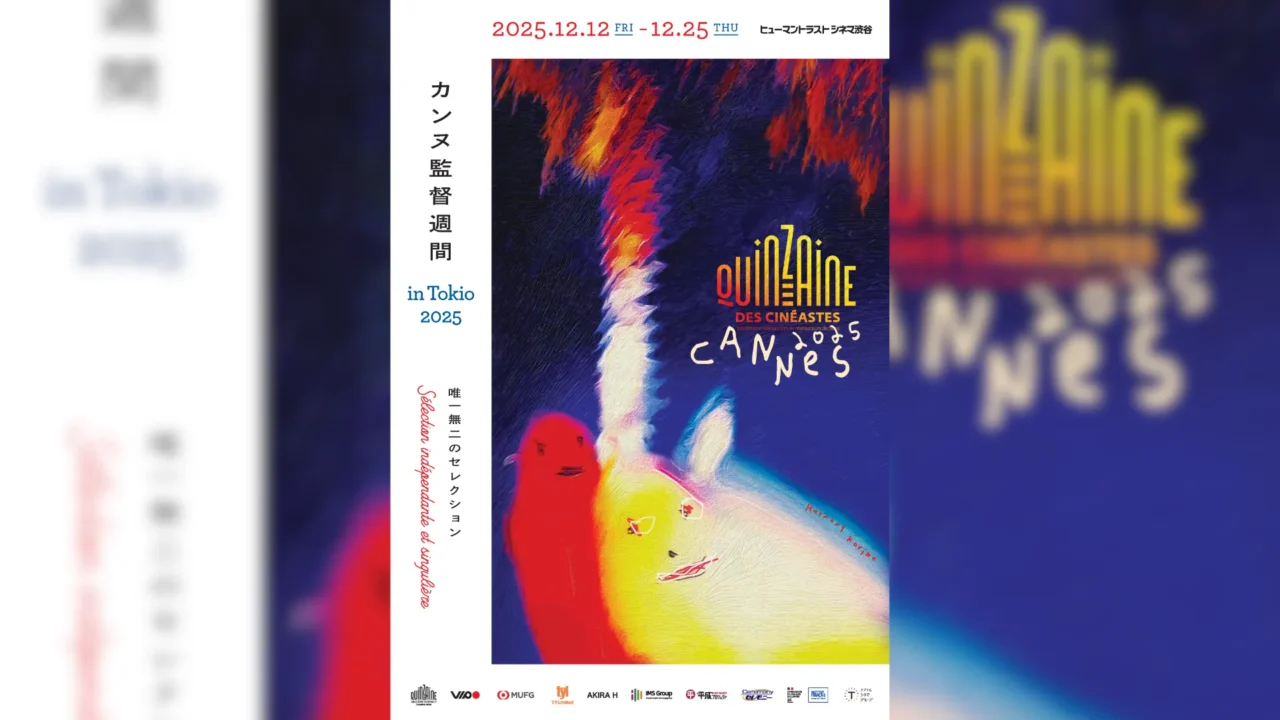While at Tama Art University, Jin Katagiri co-founded the comedy duo Rahmens. Now, along with acting, he’s thriving as a clay sculpture artist. His Absurd Clay Art Exhibition ‘Giri-ten’, launched in 2016, toured 18 cities across Japan over four years, attracting around 78,000 visitors to Aeon Malls nationwide. Known for pieces that blend humor and accessibility with intricate craftsmanship, Katagiri’s art has a unique appeal.
A lifelong connection to art has driven him to share its wonders across many fields, and during Art Week Tokyo (AWT), he found himself particularly drawn to exhibitions featuring “sculptural works and installations.”
Among these, Katagiri visited Sunlight Announcements by Asako Fujikura at WAITINGROOM, where he delved into the beauty of “art without right answers.” We spoke with Katagiri about his approach to life, how children taught him new ways to appreciate art, and more.
INDEX
An Early Encounter with Art: Astonished by Crowds Flocking to Masterpieces
Can you tell us about your first encounter with art?
Katagiri: My first museum visit was in sixth grade, when my father took me to a Van Gogh Exhibition. I think it was in Ueno. Honestly, I don’t remember much about the artworks themselves [laughs], but what stuck with me was the sight of adults packed tightly into the exhibition space, all eagerly trying to see the paintings. I remember about a hundred people crowding around a single painting, and all I could think was, “Van Gogh is incredible!” and “I want to be like Van Gogh!”
I grew up in the suburbs of Saitama, just like Asako Fujikura, whose exhibit I saw today. So as a child, going all the way to a museum in Tokyo felt like a really special experience. My father worked in architecture and was busy even on weekends, but he loved not only architecture but also painting. Though he could be a bit strict, he would sometimes take time off to bring me to places like the National Museum of Western Art in Ueno or the National Museum of Modern Art in Takebashi.

Born in 1973, from Saitama Prefecture. A graduate of Tama Art University, he is an actor and sculpture artist. Currently active on television, stage, drama series, and radio, Katagiri’s recent appearances include New Airport Seizure (NTV), Kumokiri Nizaemon Final (NHK BS), and the stage production Harold and Maude. Since 1999, he has been pursuing his work as a sculpture artist alongside acting. In 2015, he held the Absurd Clay Art Exhibition ‘Giri-ten’ at Aeon Mall Makuhari Shintoshin, and from 2016, he took the exhibit to Aeon Malls nationwide, touring 18 cities over four years and attracting a total of 78,000 visitors. In 2019, he held his first solo overseas exhibition, Giri-ten Taiwan. In 2021, he celebrated 20 years of his clay work with the Jin Katagiri Creative Encyclopedia Exhibition at Tokyo Dome City’s Gallery AaMo.
Asako Fujikura Exhibition: Sunlight Announcements (WAITINGROOM)
So as a child, you had the experience of traveling outside your prefecture to encounter art.
Katagiri:Yes, at the National Museum of Western Art, we could enjoy Le Corbusier’s architecture and Western paintings by artists like Monet, and at the National Museum of Modern Art, we could see Kunio Maekawa’s architecture along with a variety of artistic works. I think Tokyo was a particularly exciting place for my father. For me as a child, one of the highlights was getting a poster or pamphlet from the museum shop on the way out. Although, to be honest, I wasn’t much of a reader, so even when I got a pamphlet, I’d often get sleepy before I could finish reading the opening “Welcome” message [laughs].
INDEX
Questioning the Excitement of Art: A Struggle During Art University
Based on your childhood interest in art, did you pursue a printmaking major at Tama Art University after graduating from high school?
Katagiri: That’s right. During high school, I visited museums for extracurricular activities and began to see various artworks. At first, I thought, “What is this? I don’t understand at all,” but gradually, I started to enjoy thinking about, “What are they trying to express?” Still, none of that left as strong an impression on me as the Van Gogh Exhibition I saw as a child. It made me realize that I wanted to be a painter like Van Gogh.
However, during my high school years, there was no internet, and it was difficult to connect with unfamiliar worlds or find ways to present my artwork to others. I thought, “If I go to art school, maybe I can become like Van Gogh,” so I entered a preparatory art school without really understanding what it entailed. But my work was treated like garbage, and everything would be redone from above… It wasn’t as kind as the world depicted in the manga Blue Period [laughs].
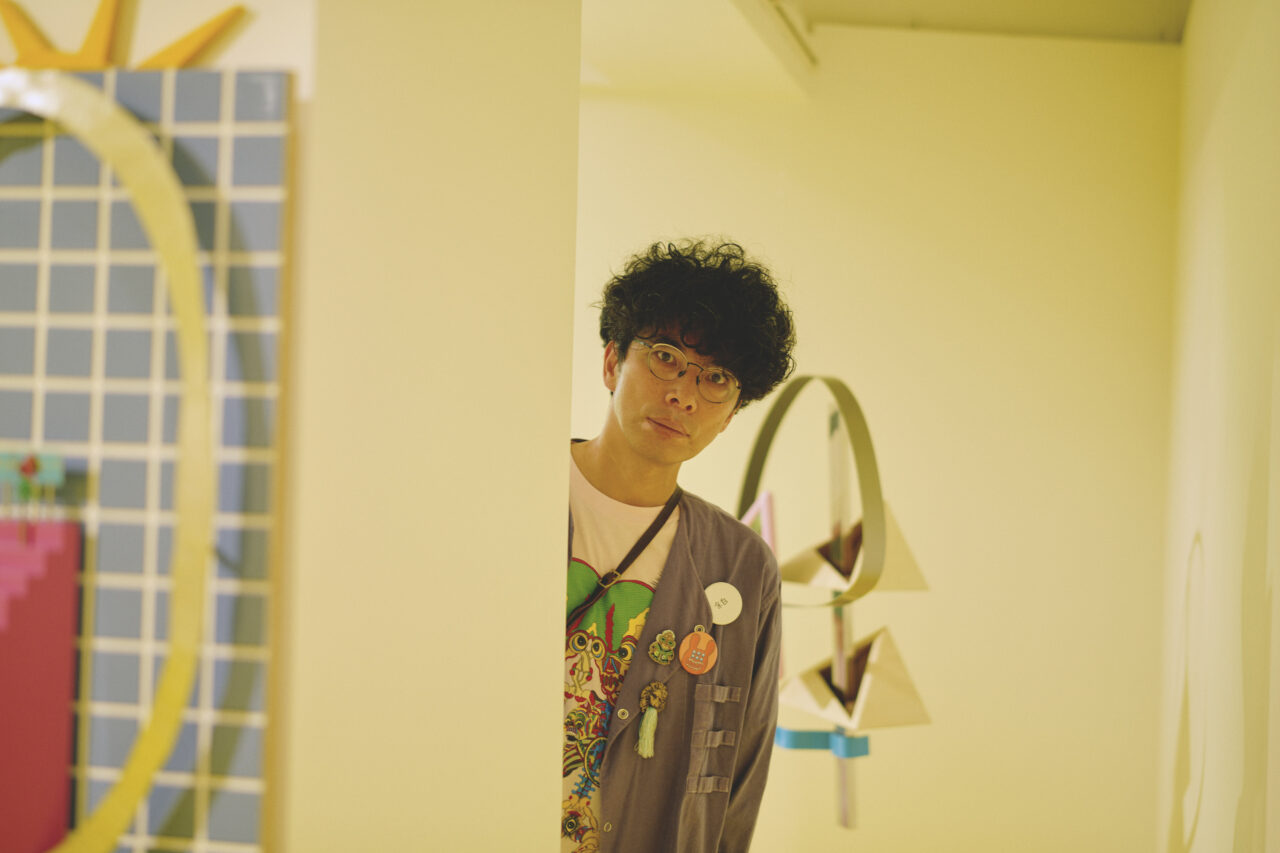
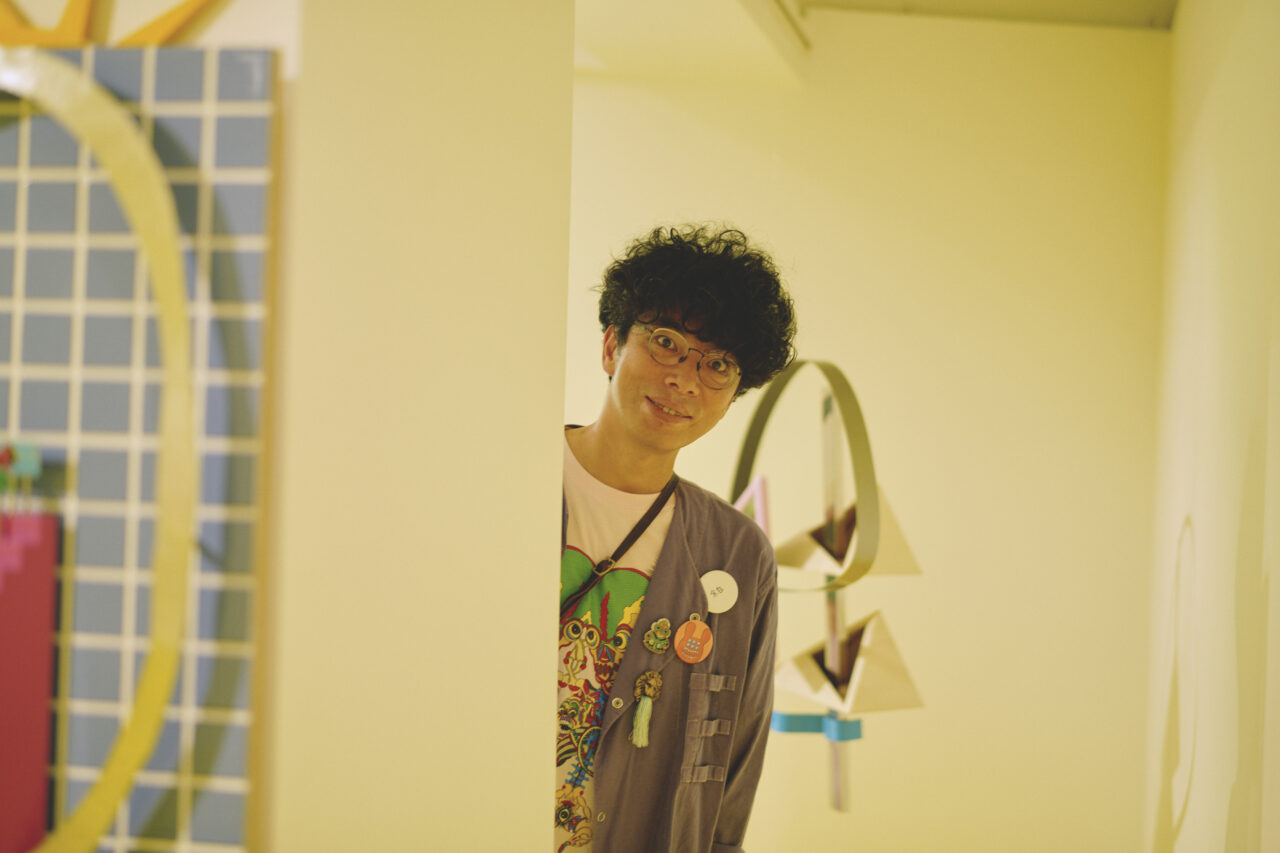
It sounds like it was quite a challenging experience…! Now, you’ve carved out a unique path as a sculptural artist rather than focusing on two-dimensional works and have built a successful career. Did you encounter a turning point in your artistic expression after entering university?
Katagiri: After several years of drawing in the strict environment of prep school, I finally got into art university, only to be faced with professors telling me, “Exam paintings aren’t real art!” In art schools abroad, entrance exams typically emphasize portfolios and interviews, but in Japan, they focus heavily on practical tests. At times, I felt stifled and thought to myself, “Maybe art is boring.”
Once I graduated from art university, I started to sense that the conversations happening within the art world were somewhat insular. I often found myself asking, “How connected are we to society beyond the art we create?”
It seems you are intentionally aware of the importance of connecting art to society.
Katagiri:That could be the case. By no longer overvaluing the myths surrounding prep schools and art universities, I began to genuinely pursue my own expression in a meaningful way. I initially aimed to become a painter and wanted to major in oil painting, but after failing the exam, I ended up in the printmaking program as an alternate. Yet, even in printmaking, I ended up creating mostly sculptural pieces instead. I found that I enjoyed sculpture more, and the feedback from others was positive, so I continued down that path. Now, I create clay art and soft vinyl figures as a sculptural artist. During my time at university, my friends would often say, “Your painting isn’t great, but your sculptures are really impressive!” While I appreciated the compliment, it left me feeling a bit conflicted [laughs].

INDEX
No Right Answers in Art or Life
During university, you formed the comedy group Rahmens with your classmate Kentaro Kobayashi, marking several turning points in your life. You seem to have a wide range of activities in sculpture, comedy, and theater, giving the impression that you’re constantly forging your own path rather than sticking to a fixed choice.
Katagiri: Meeting my partner Kentaro Kobayashi during school and forming Rahmens allowed me to explore various expressive possibilities through our comedy shows. Along the way, I’ve taken on roles as a comedian, actor, and voice actor, as well as pursuing my artistic endeavors. I appreciate the immediacy and clarity of evaluation in comedy and theater—seeing whether something resonates with the audience right away. Through performing comedy and theater, I’ve realized my desire to connect with the audience and receive their feedback directly, which I believe has influenced my style in clay art. Since there are no right answers in life, I can only pursue my own form of expression in the moment.
Does this sense of “no right answers” also affect how you engage with art today?
Katagiri: Yes, definitely. If you approach contemporary art, which can seem difficult at first glance, with the mindset that there’s “no right answer,” you can enjoy the feeling of uncertainty without being on guard. Overthinking things can take the fun out of it. For me, it’s more important to enjoy the feeling of not understanding than to actually grasp the art.
I learned that the works of Asako Fujikura you showed me today are inspired by the landscapes of suburban cities where I grew up, like highways, shopping malls, dense housing, and farmlands, depicted through unique 3DCG worlds. I was surprised to see how close to home they were! Even when I recognized the familiar landscapes, Fujikura expressed them using 3DCG, sculpture, and words, creating an intriguing and mysterious world.
There were words next to the objects, which piqued my curiosity, so I leaned in to read them. To be honest, I didn’t fully understand them, but I believe art doesn’t have to be something we understand. It’s better to accept the unknown and enjoy it. I relished the mystery of Fujikura’s expressions and left with the question, “What is this?” still lingering.
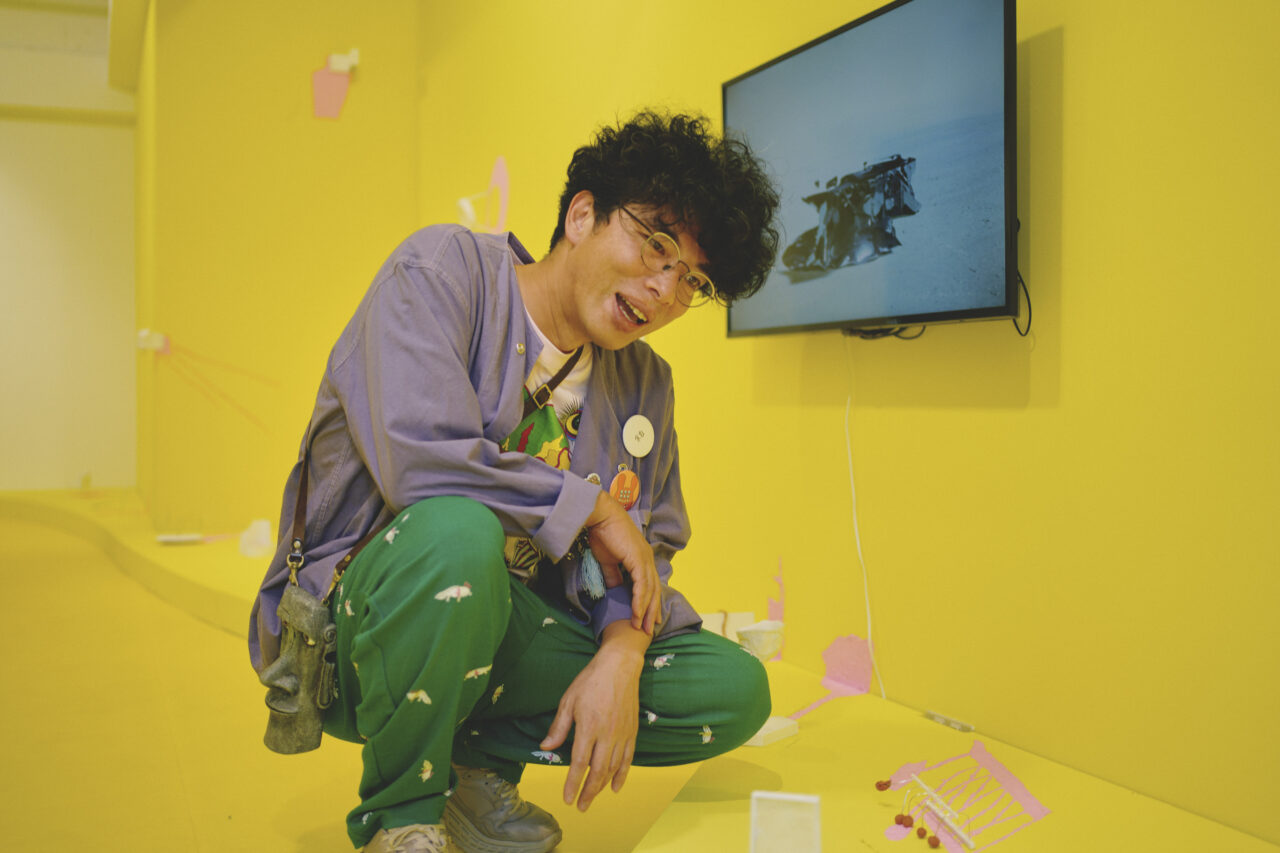
Asako Fujikura’s Sunlight Announcements / 日当たりの予告群 Venue: WAITINGROOM
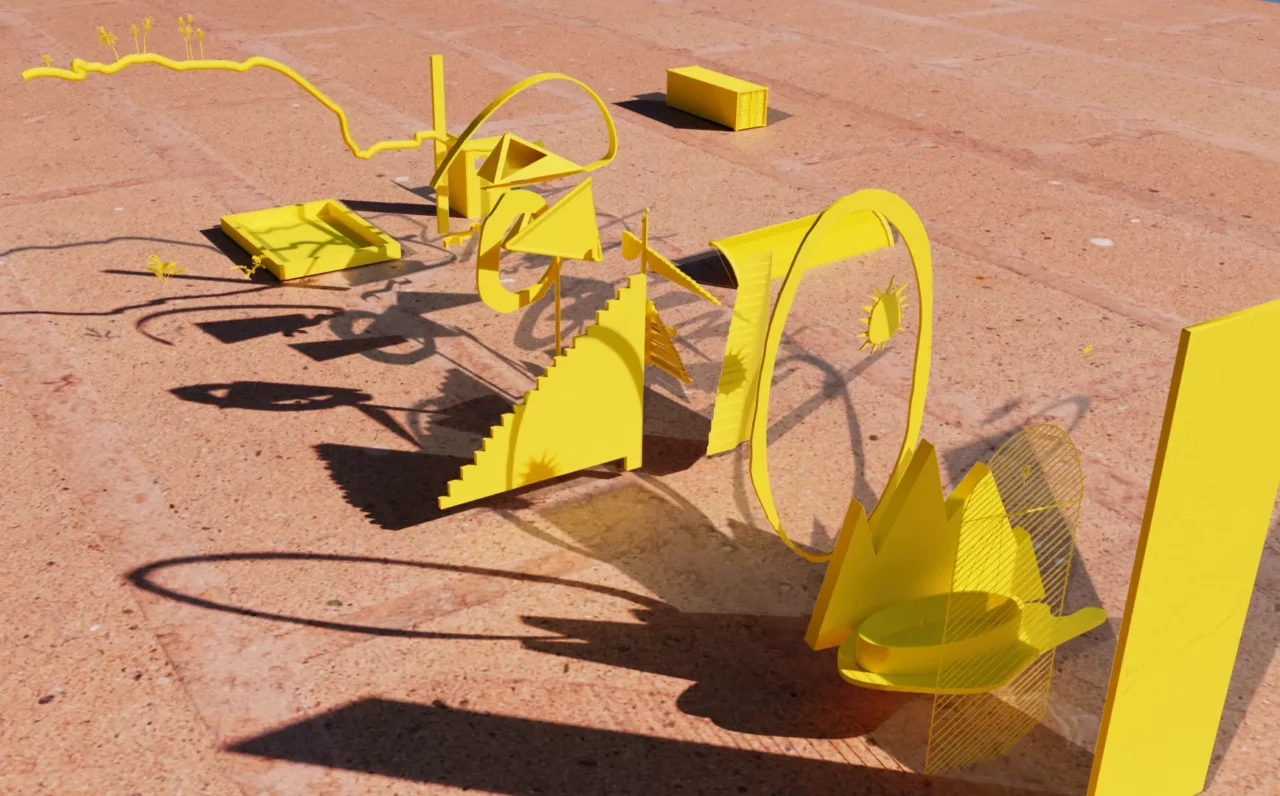
©︎Asako Fujikura, courtesy of the artist and WAITINGROOM
Asako Fujikura’s solo exhibition focuses on the depth of infrastructure that traverses urban and suburban landscapes, utilizing primarily 3DCG animation techniques. Centered around the themes of “Sunlight” and “Announcements,” which are fundamental to her creative process and consistently integrated into her works, the exhibition features new video pieces and flat sculptures within an installation space.
Exhibition Period: September 14, 2024 (Saturday) – October 20, 2024 (Sunday)
Address: 1F Nagashima Building, 2-14-2 Suidō, Bunkyo-ku, Tokyo
URL: https://waitingroom.jp/exhibitions/sunlight-announcements/
Asako Fujikura is participating in “AWT FOCUS” at Art Week Tokyo. She will also hold a talk session with Junko Oki at the “Meetup.”
For more details, visit: https://www.artweektokyo.com/awt-talks/meetup/
INDEX
Why I Enjoy Exploring Art Spots: Learning the Joy of Art from Children and My Fascination with the Frame Over the Masterpiece
What Do You Consider Most Important in Enjoying Art?
Katagiri: It’s important to feel freely without pursuing meaning too much. I try to enjoy art based on my intuition, without the constraint of “I have to feel this way.” For example, when experiencing art or theater, I sometimes remember something from my past that feels similar. It’s interesting how another person’s expression can link to my experiences, allowing daily life to blossom in new ways. That’s one of the great joys of art.
How Do You Enjoy Art with Your Son?
Katagiri: I’ve been going to museums with my son more often recently. When we visited the Pola Museum in Hakone to see Monet’s paintings, he was much more interested in the frames than the artwork itself. While I was pondering what the painting was expressing, he was in front of the masterpiece saying, “The frame is so cool!” [laughs].
It Seems to Resonate with Your Childhood Experience at the Van Gogh Exhibition, Where You Were More Focused on the Crowd Than the Art.
Katagiri: Yes! My son doesn’t care about the meaning of art yet; he simply reacts to what’s in front of him. Watching him enjoy art so freely reminds me to take a lighter approach as well. The idea that “there are no correct answers in art” is something I’ve learned from him anew. Children notice things that adults might overlook, so experiencing art together leads to new discoveries and is really fun.
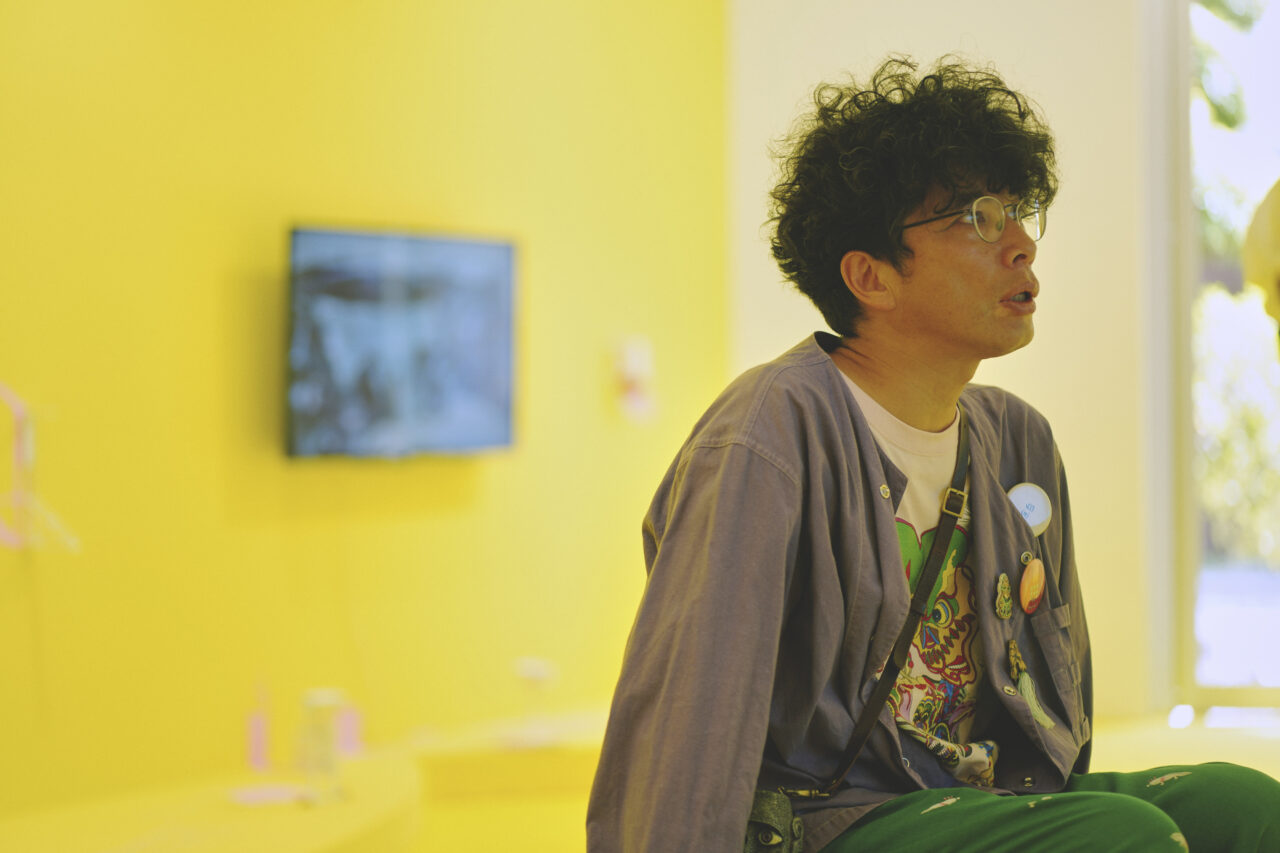
INDEX
How Will He Explore “Art Week Tokyo”?
From November 7 to 10, Tokyo will host “Art Week Tokyo (AWT),” an annual big event featuring 53 of the city’s leading museums and galleries. During the event, a free shuttle bus (AWT BUS) will circulate between various art spaces, making it easy for everyone, from children to adults, to enjoy art.
Katagiri: Wow, 53! I didn’t realize there were so many museums and galleries in the city. As a sculptor, I’d definitely like to focus on three-dimensional works and installation exhibitions, like the ones I saw today by Asako Fujikura.
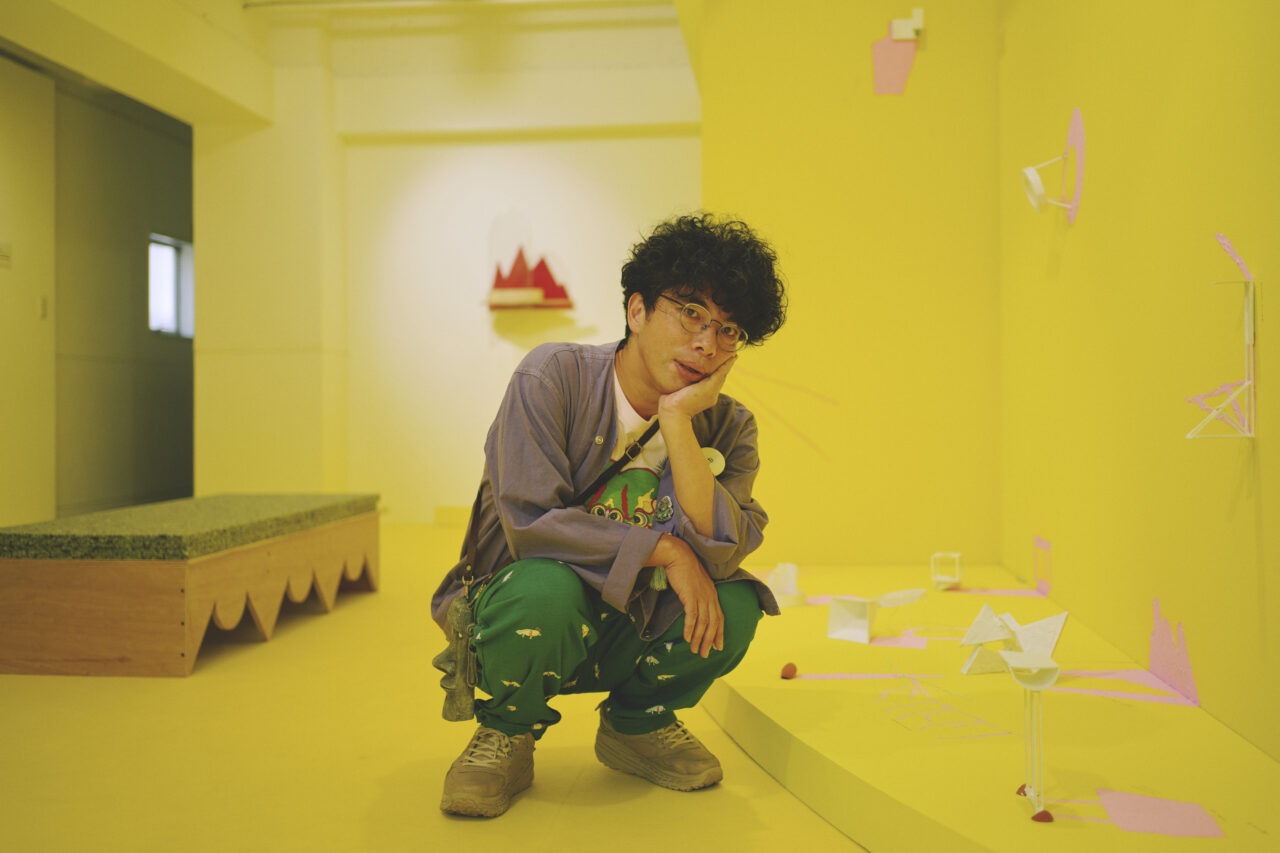
Dan McCarthy’s “Solo Exhibition” at KOSAKU KANECHIKA.
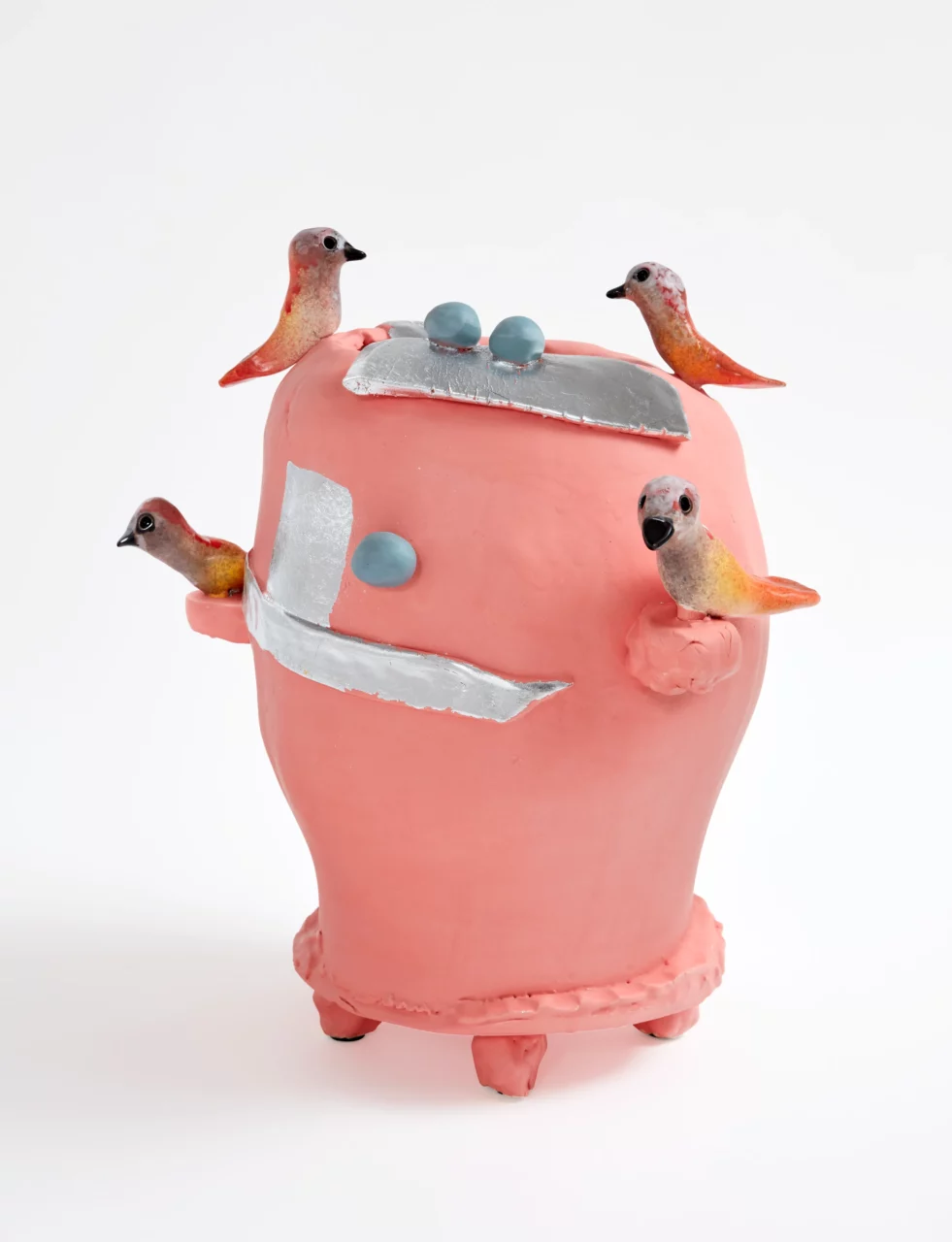
Dan McCarthy has presented his playful and imaginative paintings and ceramic works worldwide over his 40-year career. He will showcase a new series of ceramic pieces featuring bird motifs, alongside new paintings, and will also exhibit some of his earlier ceramic works.
Exhibition Dates: October 12, 2024 (Saturday) to November 16, 2024 (Saturday)
Location: 1-33-10 Higashi-Shinagawa, Shinagawa-ku, Tokyo, TERRADA Art Complex 5F
URL: https://kosakukanechika.com/exhibition/dan_mccarthy/
Katagiri: One exhibition that particularly caught my attention is Dan’s. I have a special fondness for ceramics within the art world. His ceramic works, featuring birds as motifs, are charming and playful. I also heard that new paintings will be included in the display, which I believe will make for a visually captivating experience.
Shizuka Okada Venue: Figure
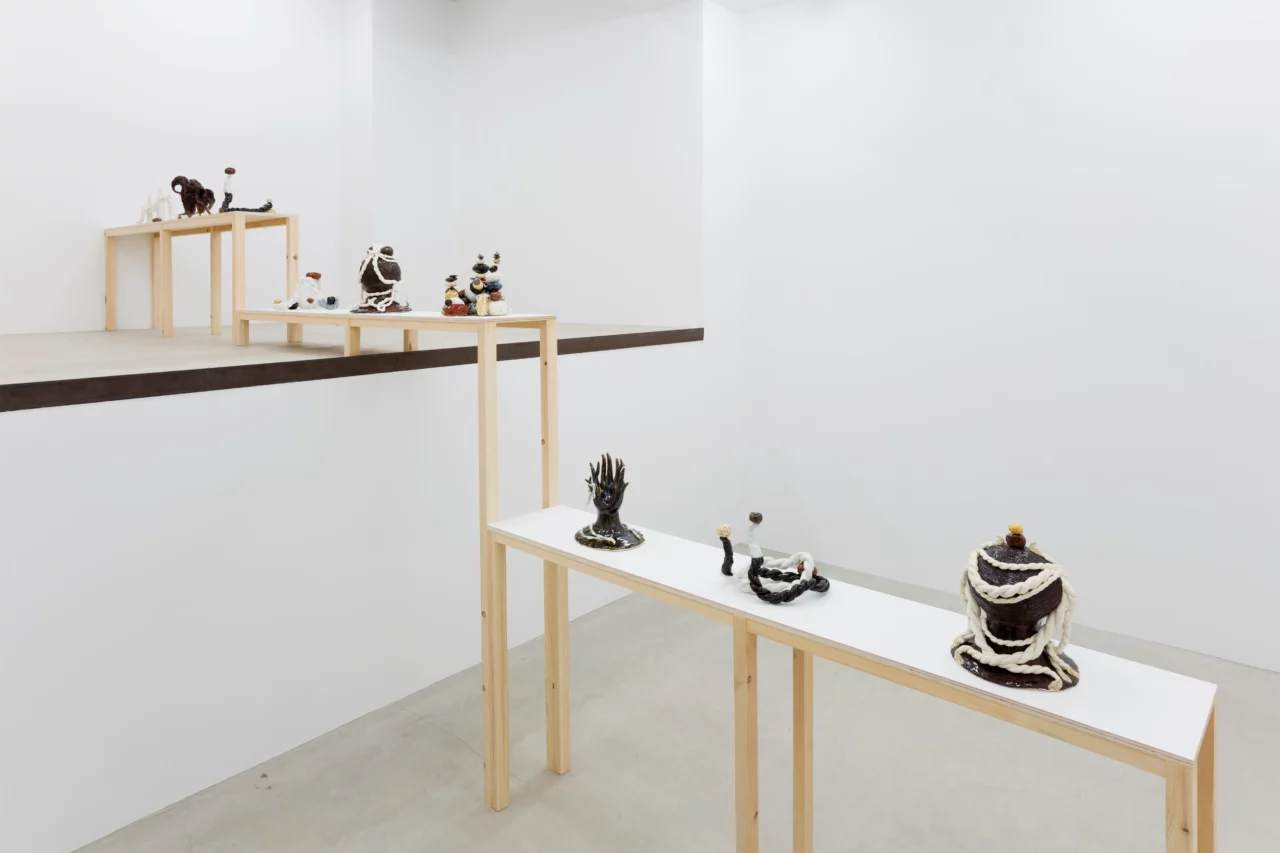
Shizuka Okada’s solo exhibition features three-dimensional works made from ceramics. Due to the nature of clay, which undergoes specific processes such as firing, Okada’s ceramic pieces possess a tangible quality. They create narratives that wander and unfold, presenting an array of images that cannot be captured by a simple binary of abstraction and figuration.
Exhibition period: October 26 (Saturday) – November 24 (Sunday)
Address: 3-27-6 Kita-Otsuka, Toshima-ku, Tokyo, 2F
URL: https://ffiigg.org/
Katagiri: Okada presents “an array of images that cannot be captured by a simple binary of abstraction and figuration,” but just from that, it’s hard to grasp what the works are like, so I want to take my time to engage with the pieces and confront the unknown.
I’ve always loved the extraordinary techniques of artists and craftsmen that allow you to feel their meticulous handiwork. These master artisans essentially utilize materials in their natural state. In contrast, my clay art involves a lot of customization; I focus on texture, applying non-slip coatings and aging processes. That’s why I’m always inspired when I see the extraordinary techniques that showcase materials as they are. Both Dan McCarthy and Okada work with ceramics, but each brings a completely different charm to their pieces.
Vajiko Chachkhiani “Big and Little Hands” Venue: SCAI THE BATHHOUSE
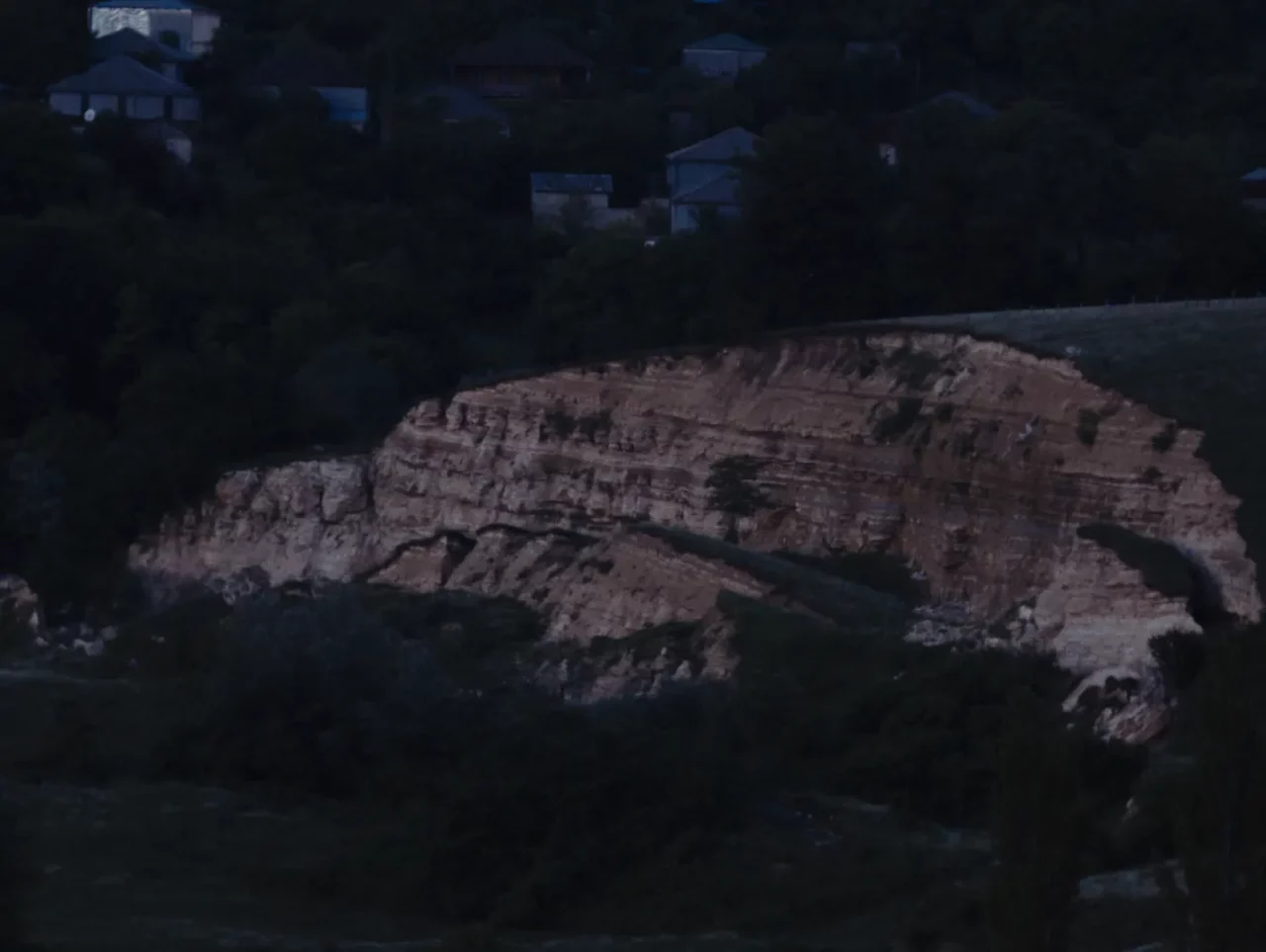
Vajiko Chachkhiani, born in Tbilisi, Georgia, in 1985, presents his solo exhibition. His works consist of sculptures and installations that address symbols representing social events. Aiming to create a form of resistance “without directly intervening in the situation,” his pieces intersect with contemporary issues in Georgia as well as themes from literature and poetry, shedding light on individual psychological problems such as loneliness, anger, and violence, making a strong impact on the viewer. This exhibition marks his first solo show in Japan in six years and features new video and sculpture works created for this event.
Exhibition Dates: November 6 (Wednesday) – December 21 (Saturday), 2024
Address: 6-1-23 Yanaka, Taito-ku, Tokyo 110-0001
URL: SCAI THE BATHHOUSE
Katagiri: SCAI THE BATHHOUSE, a gallery housed in a renovated historic public bath, seems quite intriguing. The exhibition aims to illuminate personal psychological issues derived from dualistic structures such as history and nature, absence and presence, and family and economy, along with the contradictions they create, making a strong impact on the viewer. I’m very curious about how Vajiko Chachkhiani, based in Georgia, will express these themes.
I also engage in various activities, but I still sometimes feel a sense of frustration when comparing myself to my peers. I think that feeling will continue as long as I live. This resonates with me and piques my interest.
During Art Week Tokyo (AWT), the abundance of free shuttle buses makes accessing various spaces much easier, allowing everyone to enjoy art in a relaxed manner as the entire city comes alive with excitement. Since it’s a great opportunity to encounter a lot of contemporary art, I plan to enjoy the vibrant art scene in Tokyo without any pressure and just have fun.
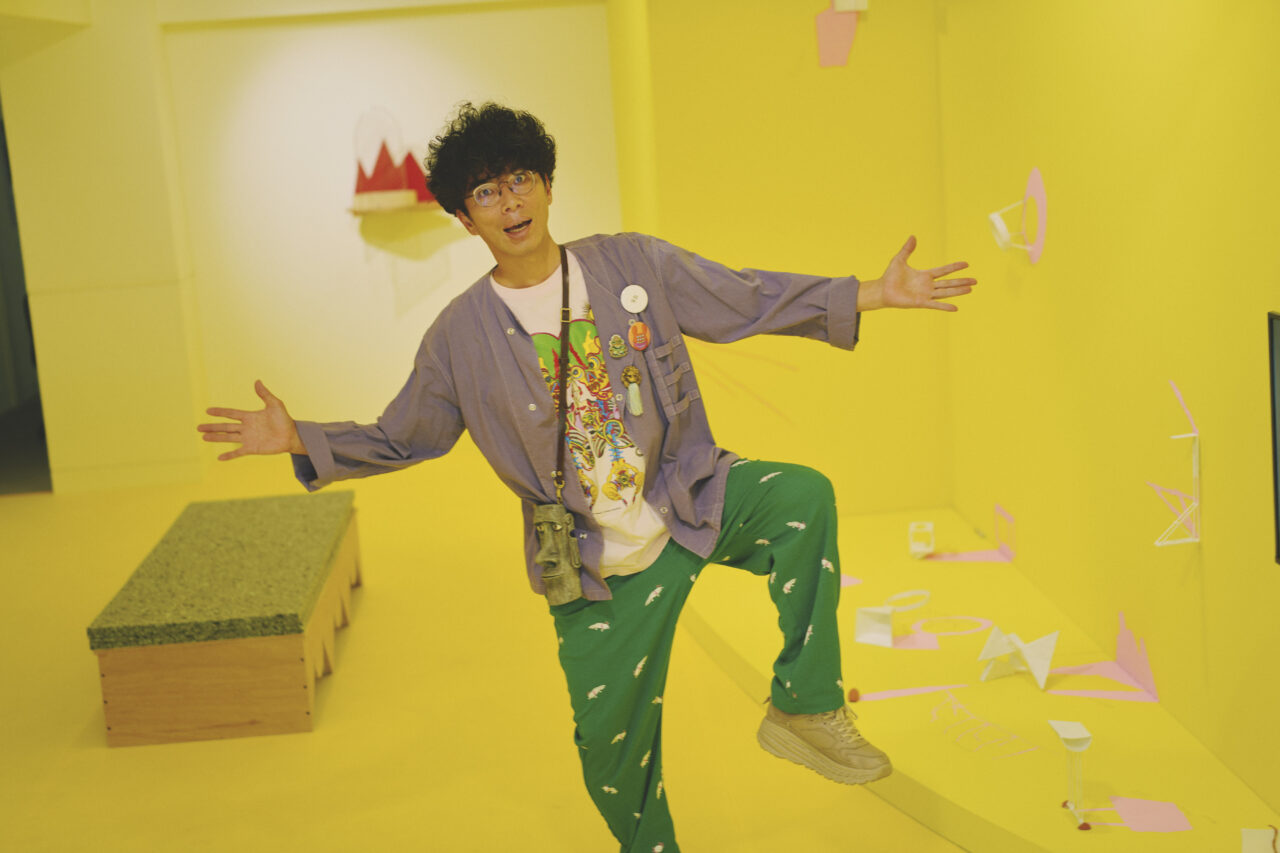
Recommended Route by Jinn Katagiri to Explore on the AWT BUS
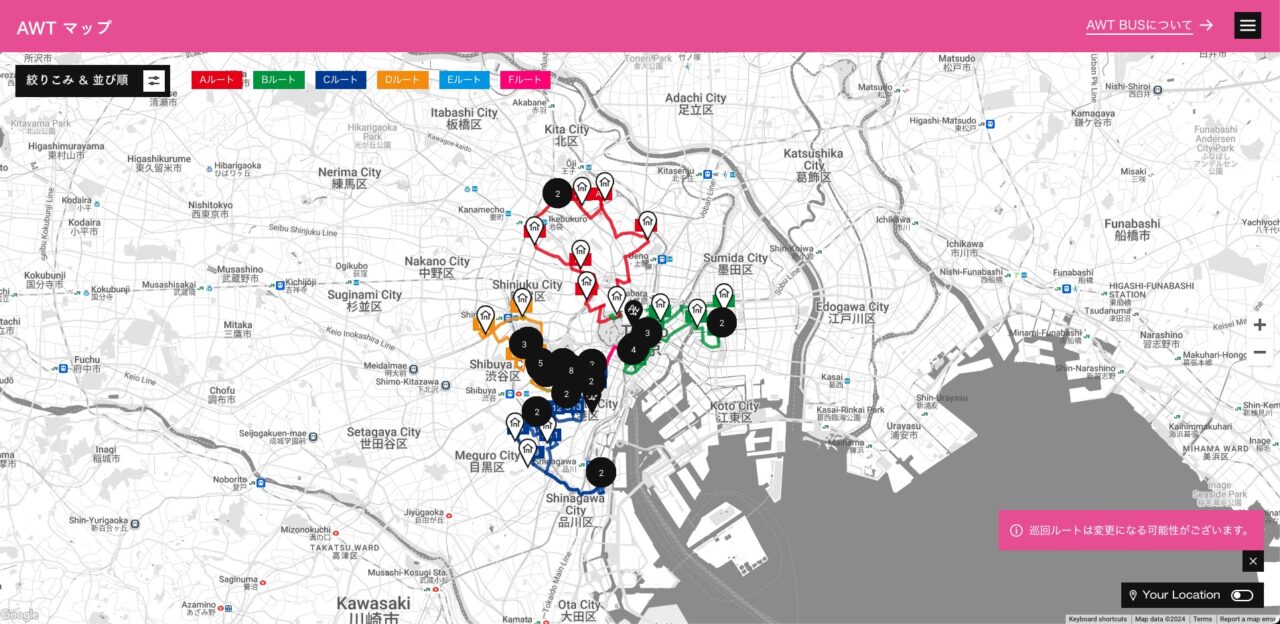
Click here for the AWT BUS map
Waiting Room (Edogawabashi)
↓
Talion Gallery (Mejiro)
↓
Fig. (Otsuka)
↓
SCAI THE BATHHOUSE (Nezu)
↓
Kanakawanishi Gallery (Kiyosumishirakawa)
↓
KOSAKU KANECHIKA (Tennozu)
Art Week Tokyo
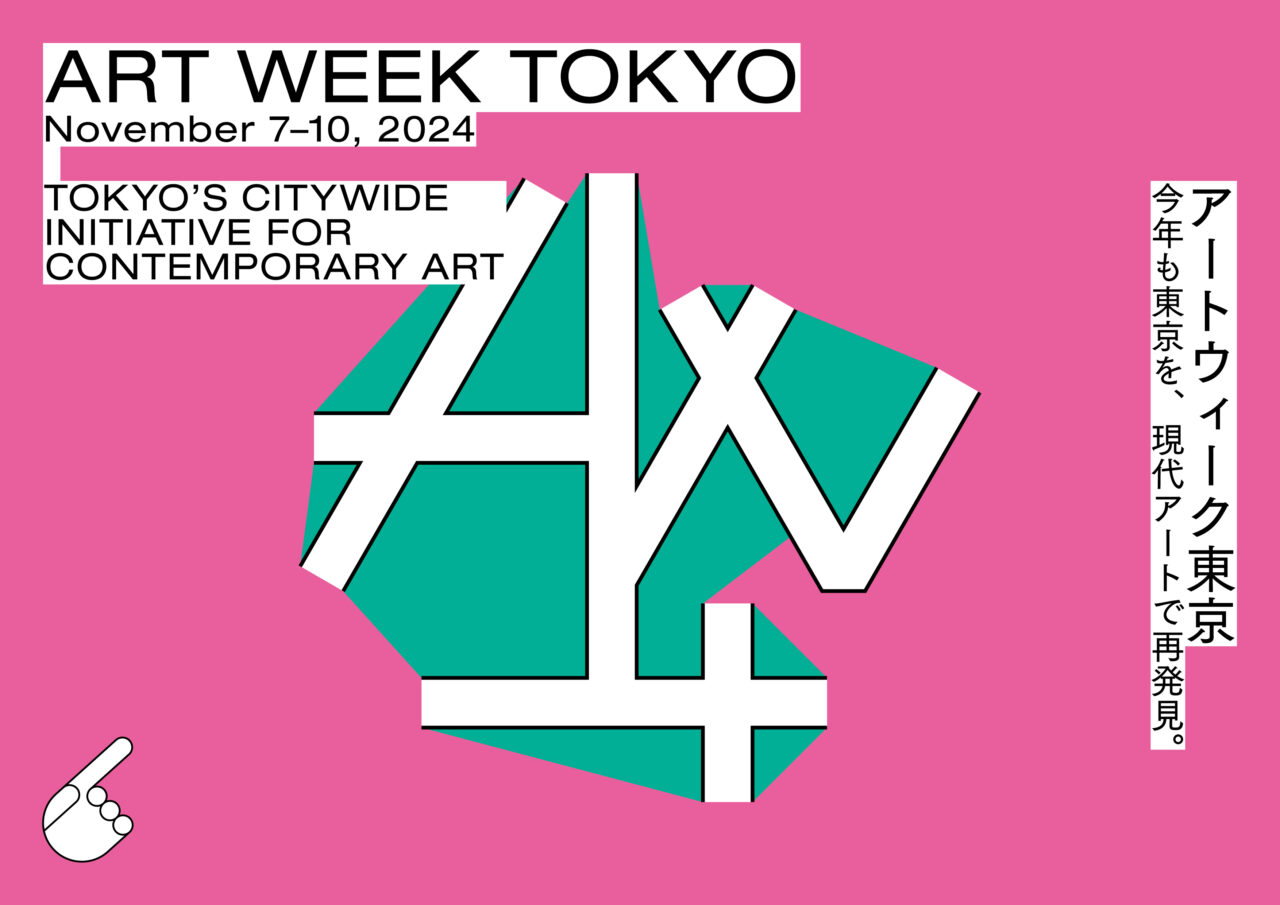
Exhibition Dates: November 7 (Thursday) – November 10 (Sunday), 2024, 10:00 AM – 6:00 PM
Venue: Participating museums and galleries in Tokyo, AWT FOCUS, AWT BAR, and other program locations
Organized by: General Incorporated Association Contemporary Art Platform
Partnership: Art Basel
Special Cooperation: Agency for Cultural Affairs
Official Website: https://www.artweektokyo.com/







